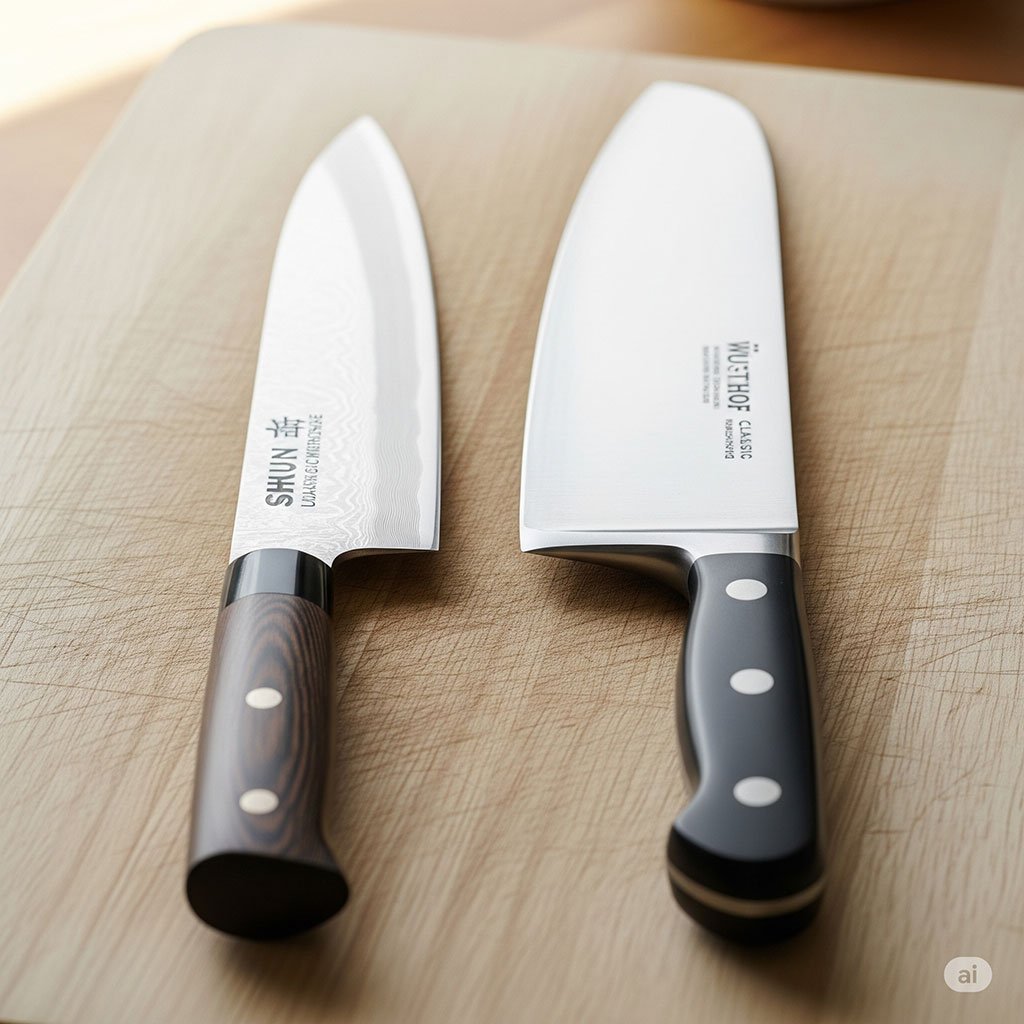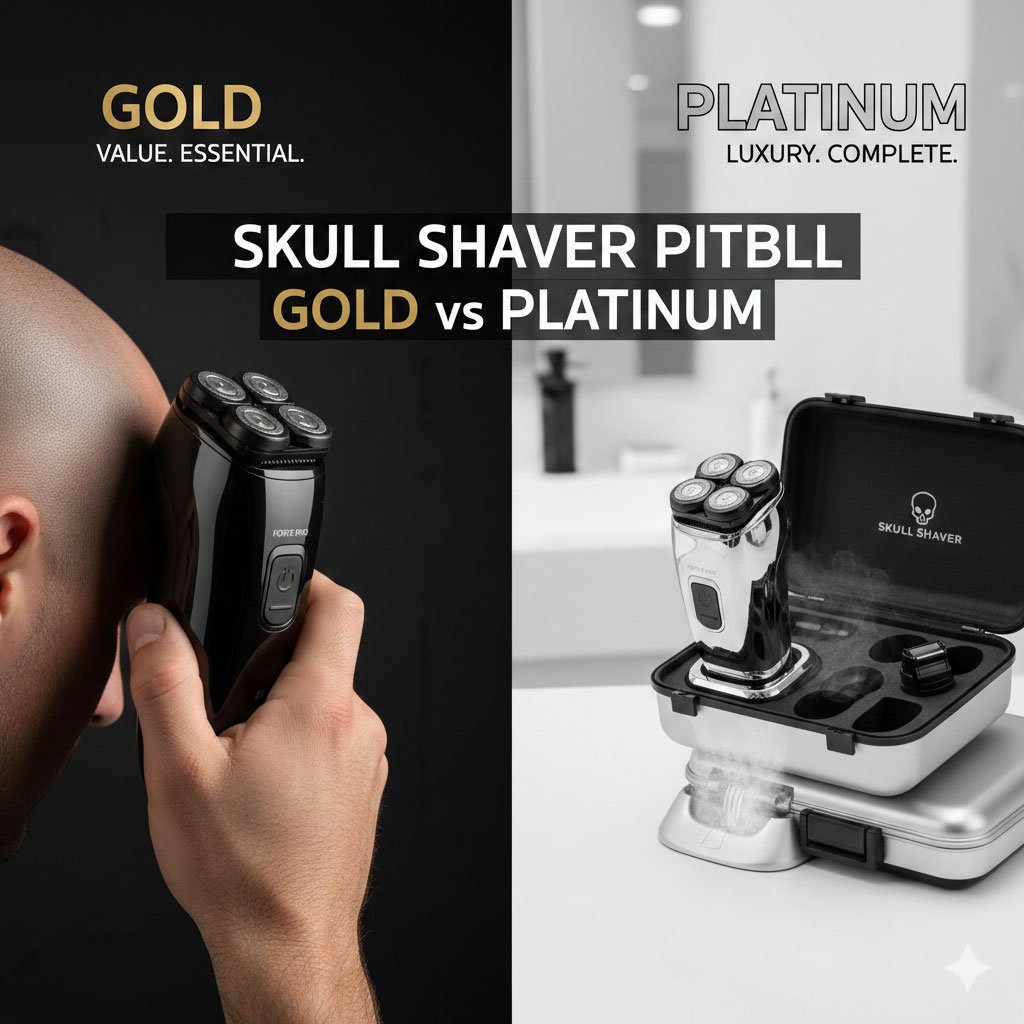Choosing the right kitchen knife can feel pretty overwhelming, right? You’re probably standing there, looking at all the options, wondering: Japanese vs German kitchen knives – what’s the big deal, and which one should I even get? Don’t sweat it. We’re going to break down everything you need to know to find your perfect match.
Your kitchen knife is more than just a tool—it’s an extension of you. Both Japanese and German knives are a huge deal in the culinary world, but they’re built for completely different reasons. Let’s dig into what makes each one unique, so you can pick the blade that truly speaks to your cooking style.

Table of Contents
German Kitchen Knife
Picture this: A knife that can handle anything you throw at it. That’s a German kitchen knife. With a history rooted in places like Solingen, these blades are famous for being tough, reliable, and ready for action.
Built Tough: The Secret’s in the Steel
German knives are typically made from a softer steel, usually around 56-58 HRC on the Rockwell Hardness Scale. What’s that mean for you? While it won’t stay razor-sharp quite as long as a Japanese knife, this softer steel is incredibly durable and super forgiving. You won’t have to worry as much about chipping the blade if you hit a bone or a hard cutting board. It’s the kind of knife that can take a beating and keep going.
All About the Blade: Power and Rocking
Take a look at a German blade. It’s noticeably thicker and heavier with a beautiful curve, or “belly,” along the edge. This design isn’t just for looks—it’s made for a rocking motion. When you’re dicing onions or chopping herbs, that motion makes quick work of your ingredients. The extra weight gives you the power you need to easily cut through tougher foods.
The Edge: Strong and Stable
The edge of a German knife is ground to a wider angle, usually around 17.5-20 degrees per side. This wider angle creates a stronger, more resilient edge. While it’s still incredibly sharp, it’s built for strength and endurance rather than ultra-fine precision.
Built to Last: Solid Construction
German knives often have a full bolster—that thick part of the metal where the blade meets the handle. This adds weight, balance, and acts as a finger guard. They also typically have a full tang, meaning the steel runs all the way through the handle, making the knife incredibly sturdy and well-balanced.
When to Pick German Kitchen Knife
A German knife is your best friend for:
- Tough chopping: Think of things like butternut squash or root vegetables.
- Everyday dicing: Making quick work of onions and carrots.
- Breaking down small poultry: The sturdy blade can handle light butchery.
- General, all-purpose cutting: It’s a true workhorse that can do a bit of everything.
Japanese Kitchen Knife
On the other side of the kitchen, you have Japanese kitchen knives. Inspired by the ancient art of samurai sword-making, these knives are all about precision, grace, and getting a perfectly clean cut every single time.
Pursuit of Sharpness: It’s All in the Steel
Japanese knives are usually made with a much harder, high-carbon steel, often hitting 60-65+ HRC. This is why they can get so ridiculously sharp and hold that edge for a super long time. The trade-off? This harder steel can be a little more brittle. You have to be a bit more gentle with it, as it can chip if you hit something hard.
The Blade: Light, Thin, and Purpose-Driven
A Japanese knife has a thinner, lighter blade that’s often much straighter. This design is built for push-cuts or pull-cuts, not the rocking motion of a German knife. Each knife shape is made for a specific job, from slicing fish to preparing vegetables with incredible accuracy.
The Edge: A Cut Above the Rest
Japanese knives have a much narrower edge angle, usually between 10-15 degrees per side. This is what gives them that legendary razor-sharp edge that makes slicing a breeze. You’ll find both double-bevel (sharpened on both sides, like most knives) and single-bevel (sharpened on just one side) options. Single-bevel knives are often used by pros for highly specialized tasks.
The Feel: Light and Agile
Most Japanese knives don’t have a full bolster. Instead, they often have a lighter “wa” handle, which shifts the balance point forward, toward the blade. This makes them feel lighter and more agile in your hand, perfect for delicate tasks.
When to Pick Japanese Kitchen Knife
A Japanese knife is the one you want for:
- Slicing raw fish: Think of beautiful, clean cuts of sashimi.
- Delicate vegetable prep: Creating paper-thin slices or intricate cuts.
- Fine mincing: Chopping herbs without bruising them.
- Any task where precision is the goal: These knives are all about finesse.
Comparison: Japanese vs. German Knives
Feature | Japanese Knives | German Knives |
Steel Hardness (HRC) | 60-65+ | 56-58 |
Blade Profile | Thinner, lighter, often straighter | Thicker, heavier, with a curved “belly” |
Edge Angle | 10-15 degrees per side | 17.5-20 degrees per side |
Weight/Feel | Lighter, agile, well-balanced | Heavier, sturdy, and robust |
Durability | More brittle, can chip easily | Very durable, resists chipping |
Maintenance | Requires careful handling and special sharpening | More forgiving, easier to sharpen |
Primary Use | Precision slicing, delicate work | Chopping, dicing, general-purpose tasks |
So, Which Knife is Your Soulmate?
It really comes down to what kind of cook you are.
- Do you need a tough, versatile knife that can handle daily tasks without much fuss? A German knife is probably your best bet.
- Are you a culinary artist who values precision and a hair-splitting sharp edge? A Japanese knife might be your new favorite tool.
Many people find that the best approach is to have a few of each! A solid German chef’s knife for everyday use and a delicate Japanese slicing knife for those special occasions is a perfect combination.
FAQ
Yep, generally they are. Their harder steel and a sharper edge angle mean they can get to a much finer point.
Definitely. That softer steel is a lot more resistant to chipping, so you can be a bit more rough with them.
German knives are more forgiving. Japanese knives, with their harder steel, need more careful handling and often a specific type of sharpening stone to keep them in top shape.
You could, but you won’t get that super clean, perfect cut that a specialized Japanese knife like a Yanagiba gives you.
Absolutely not. The hard, brittle steel is very likely to chip. Leave bone-chopping to your sturdier German knives.
Not necessarily. You can find fantastic quality in both categories across all price ranges, but the high-end, hand-forged Japanese knives can get pretty pricey.
A Santoku is a popular Japanese all-purpose knife. It has a flatter blade than a German chef’s knife and is great for dicing, mincing, and slicing. It’s a great choice if you want to try a Japanese style without getting too specialized.
Final Words
At the end of the day, the debate of Japanese vs German kitchen knives isn’t about which one is “better.” It’s about which one is better for you. Both traditions offer incredible craftsmanship and quality. Think about your cooking style and your kitchen habits, and you’ll find the perfect knife to elevate your time in the kitchen.



